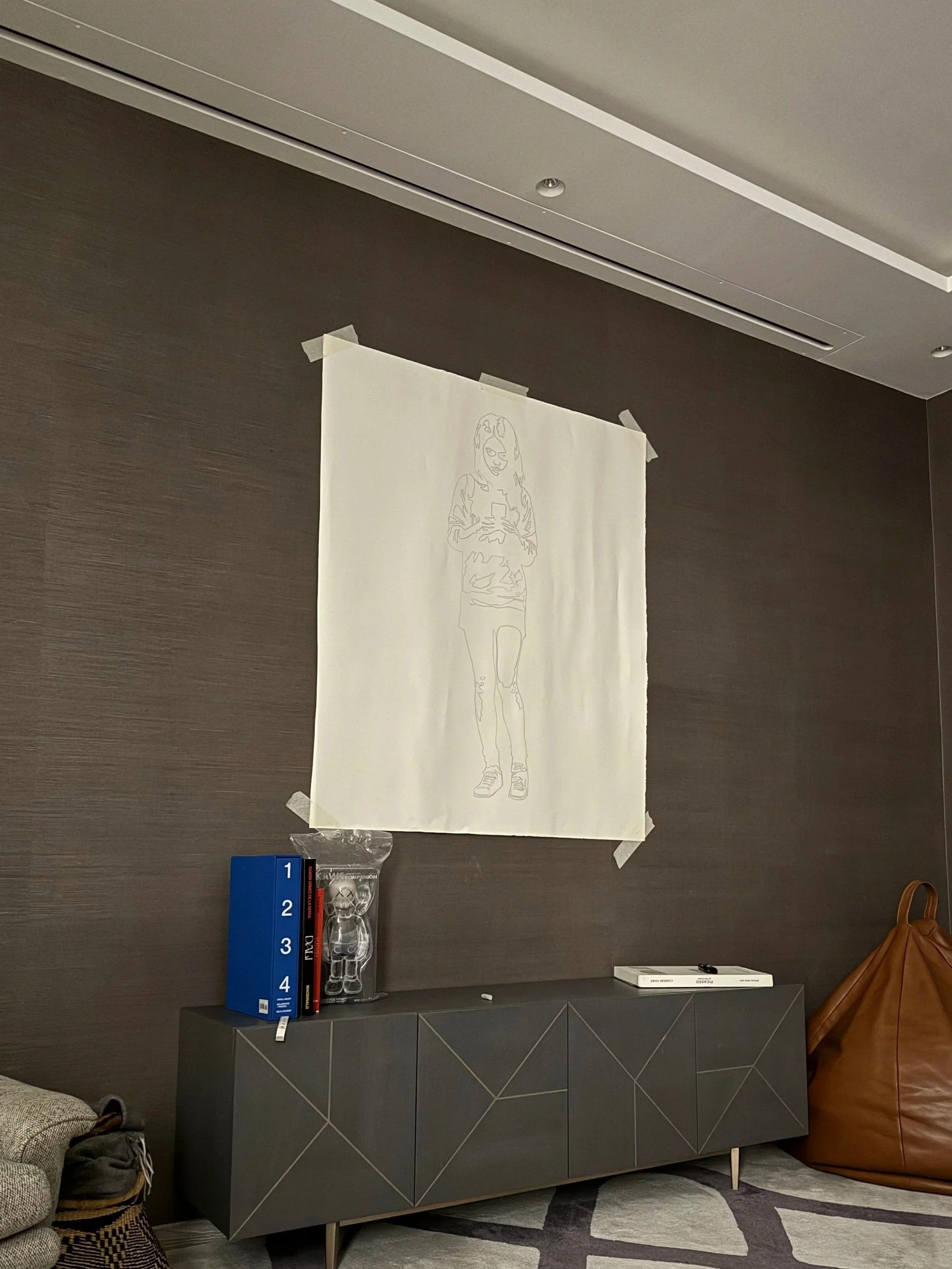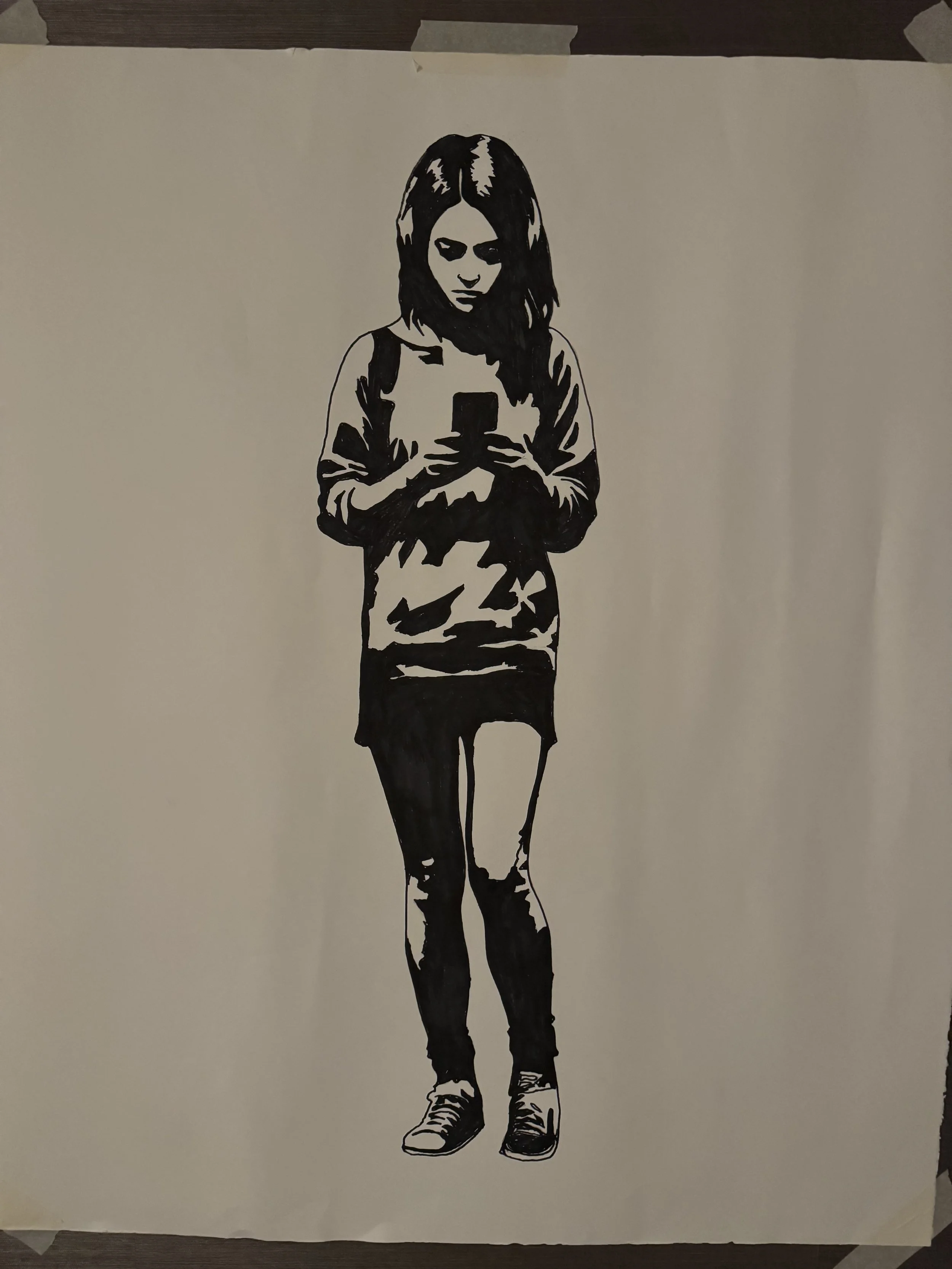Screen Walk
Acrylic-based ink and graphite on paper
Executed 26 April 2024
Screen Walk occupies a defining place in Miguel Fernández’s portfolio, as the first fully realised artwork on paper that demonstrates his transition from exploratory sketches, stencils and studies into the bold, graphic style that would later come to define his later practice. Executed on cartridge paper using acrylic-based ink and graphite, this work captures both the artist’s technical evolution and his uncompromising social critique of digital dependency among young people.
The subject is a teenage girl, shown walking with her gaze fixed downward into the screen she holds. Her posture is slightly curved forward, her attention magnetised by the device, her presence in the surrounding world effectively erased. Fernández distils this figure into sharp black silhouettes and sculptural shadows, the void-like background heightening her detachment. By omitting all contextual detail, the artist isolates the girl in a blank, timeless space, mirroring the way technology isolates the individual from their lived environment.
Visually, the piece marks a significant evolution from Fernández’s early works of 2019. In those formative artworks, children were rendered colourless, with only the devices and the eye-covering bars depicted in strong colour, a metaphor for energy and vitality drained into screens. The backgrounds were deliberately vibrant, creating a painful contrast between the muted children and the dynamic world they no longer inhabited. In Screen Walk, Fernández abandons this chromatic clash in favour of a stark monochrome treatment. Bold contours, expanded shadowing, and amplified silhouettes replace the spectral absence of his earlier figures with a more immediate, confrontational presence. It is the first instance of his language becoming fully graphic, paving the way for the stencilled graffiti interventions that would soon follow.
The inspiration for the piece was drawn from direct experience: while in London, Fernández observed a teenage girl walking through the city, colliding with strangers as she moved, entirely absorbed by her device. She neither looked up nor apologized, an indifference that became emblematic for the artist of a wider societal condition. What might otherwise have been a fleeting urban observation is here crystallised into allegory: a generation walking with screens, present in body but absent in spirit.
The title, Screen Walk, encapsulates both the literal and the metaphorical. It describes the familiar act of moving while entranced by a device, but it also suggests a broader procession, an entire generation marching blindly, led not by their senses or awareness but by screens. The banality of the phrase underscores the tragedy of its normality.
Significance
As the first completed practice on paper in this bolder mode, Screen Walk occupies a pivotal place in Fernández’s collection. It represents both a technical milestone, the transition from colourless figurations to assertive, graphic compositions, and a conceptual deepening of his mission: to confront the psychological and social costs of technology’s encroachment on childhood, youth, and mental wellbeing.
With its stark imagery and stripped-down formalism, Screen Walk transcends daily life to become emblematic. It is not merely a portrait of one distracted teenager but a cultural mirror, a visual warning, and an urgent call for dialogue about what is being lost in the glow of the screen.



